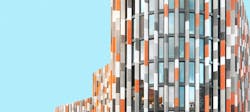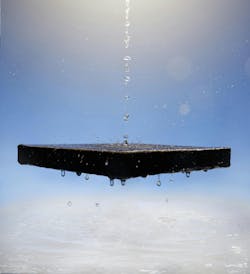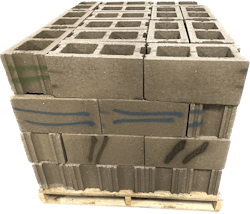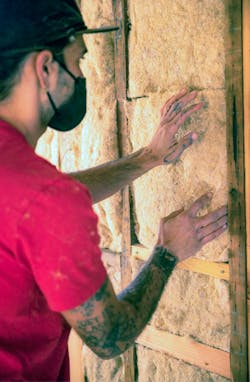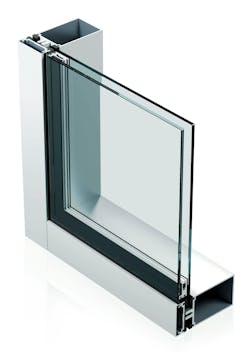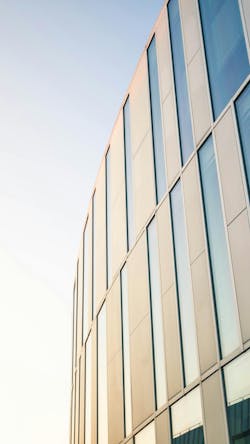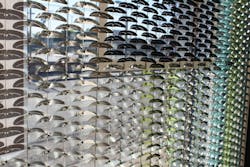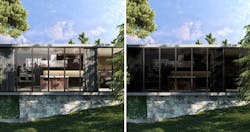The U. S. Green Building Council-Los Angeles (USGBC-LA), an independent nonprofit, is not just a community of green building and sustainability professionals; it’s an organization trying to further the goal (and probability) of a net zero future. Balancing the amount of greenhouse gas produced and removed in the built environment is ambitious, and not at all possible without innovative materials, systems, and technology. Enter USGBC-LA’s Net Zero Accelerator. Colin Mangham, the program’s director, explains how it’s making an impact.
Q: What is the USGBC-LA Net Zero Accelerator?
A: As an organization, USGBC-LA’s mission is really to accelerate sustainability in Southern California and create a more sustainable, resilient, and equitable region for all. We're home to the only Net Zero Accelerator in the world focused on zero energy, carbon, water, and waste in the built environment. We take the technologies that exist today and help them scale with the goal of achieving a net zero, or perhaps even a net positive, future.
We select companies that we believe are going to help us get there faster. We focus on tangible pilot projects, ones that harness the collective expertise and diversity within our community of sustainability practitioners, green builders, and other stakeholders.
For our member companies, we play a vital role in helping them de-risk, stress-test, refine, and sometimes pivot their innovations with the overarching goal being to prepare them for scaled adoption. Alternatively, for those already making strides in other geographical markets, we assist them in seamlessly piloting their solutions into large portfolios within the Los Angeles area, validating success with data and expanding their client opportunities.
This is our program’s fifth year. We've supported 90 companies and have been tracking about 40 pilots since 2019.
Q: Explain the cohort companies.
A: We're an accelerator, not an incubator, so the companies we work with are growth-stage, meaning they already have a product or service that’s in-market or otherwise ready to be commercialized. This supports our approach for quick deployment and scaling. We focus on two things: 1) storytelling relevant and actionable to our region and 2) market and pilot project development and case studies.
Despite our bias, the data underscores that Los Angeles is among the premier proving-ground markets for proptech and cleantech. The city’s highly public, tech-forward, and media-rich environment provides an ideal backdrop for showcasing success stories. Additionally, the support of favorable regulatory policies and a strong environmental stance contribute to the appeal.
The companies and products featured here are among USGBC-LA’s Net Zero Accelerator cohorts.
Stormwater Management
AquiPor’s permeable concrete technology is capable of managing large volumes of stormwater to help mitigate stormwater runoff pollution and urban flooding in the built environment. Featuring sub-micron porosity, AquiPor material filters stormwater runoff without clogging, removing debris and particulate pollutants in stormwater. Made with reclaimed industrial by-products and without Portland cement, AquiPor products have an inherently low CO2 footprint.
Aquipor, www.aquipor.com
Low-Carbon Cement
Carbon Upcycling’s enhanced cement-like material, known as supplementary cementitious materials (SCMs), replaces the main carbon-intensive ingredient in cement and reduces its emissions by up to 60%. Concrete with the new low-carbon cement maintains its color while demonstrating exceptional strength and durability. The enhanced SCMs are made from leftover materials like steel slag or clay processed through the company’s technology, which turn the materials into vessels to permanently capture CO2.
Carbon Upcycling, carbonupcycling.com
Bioaggregate Cement
The patented technology transforms agricultural and forestry waste into bioaggregates for mixing into cement products. This process sterilizes the fiber, increases its porosity, removes sugars that inhibit cement hydration, and shapes the fibers to flow within existing concrete manufacturing equipment. Bioaggregates act as a biogenic carbon sink and can displace up to 45% of sand aggregate by volume.
DTE Materials, dtematerials.com
Sustainable Insulation
HempWool is a plant-based high-performing building insulation product, appropriate for anywhere in a structure’s thermal envelope, including walls, floors, ceilings, attics, and partition walls. It is a one-to-one replacement for conventional insulation materials like fiberglass, mineral wool, and spray foam. Made of 90% natural fiber (industrial hemp), HempWool has no VOCs and toxins, making it a safe alternative to traditional insulation. It’s also vapor permeable and hygroscopic, making it mold-resistant.
Hempitecture, Hempitecture.com
Renewable Glazing
INOVUES is pioneering a unique platform for renewable, upcyclable glass facades. It can upgrade existing glazing to the latest sustainability and comfort standards for as low as 10% of the cost of replacement, as well as make windows and facades easily upgradeable. INOVUES’ patented non-invasive glazing retrofit systems achieve three to 10 times thermal performance improvement and up to 40% energy and carbon savings. They are compatible with all glass types, including the latest smart and photovoltaic technologies.
INOVUES Inc., www.inovues.com
Water Monitoring
Saya's water monitoring and leak detection enables multi-unit residences to bill individual water users, even when there is only one utility-owned water meter servicing the building. Additionally, the meter's precision and cloud-based algorithms that monitor water flow are effective in alerting users to small water leaks, such as slab leaks and pipe ruptures, and can even automatically shut off water. Saya’s technology can be employed during construction for leak management and, once the building is occupied, can be used for sub-metering, leak management, and conservation.
Saya Life, https://saya.life
BIPV-Integrated Façades
Mitrex is leading a solar energy revolution, aiming to turn every sunlit surface into a beacon of sustainable power. The company’s building-integrated photovoltaic (BIPV) systems offer architects, engineers, and building owners the opportunity to create net-positive façades that set new standards in eco-friendly construction and actively offset energy usage from the grid.
Mitrex, mitrex.com
Self-Shading System
TBM Designs’ InVert™ self-shading window system takes no energy to save energy, using biophilic thermo-bimetal pieces sealed inside a standard double-paned window cavity, reflecting heat away from the building, reducing air conditioning use, energy demand, greenhouse gas emissions, and costs by up to 35%. InVert provides occupants an outside view and allows significant daylighting and full color spectrum through the window, even when actively shading, which maximizes human wellness. Architects, developers, and designers can now specify this smart product for retrofits or new commercial and multi-family building projects.
TBM Designs, www.tbm-designs.com
Smart Windows
Miru smart windows (eWindows) offer a game-changing solution for reducing global carbon emissions. eWindows electronically tint to control sunlight and solar heat, resulting in reduced energy consumption, lower carbon emissions, and significant cost savings for building owners. These smart windows eliminate the need for blinds, allowing you to enjoy a pleasant view, regardless of season, time of day, country, or climate – enhancing the well-being of occupants. Miru eWindows are color neutral, switch uniformly, and increase building energy efficiency by 20%.
Miru Smart Technologies, www.mirucorp.com
